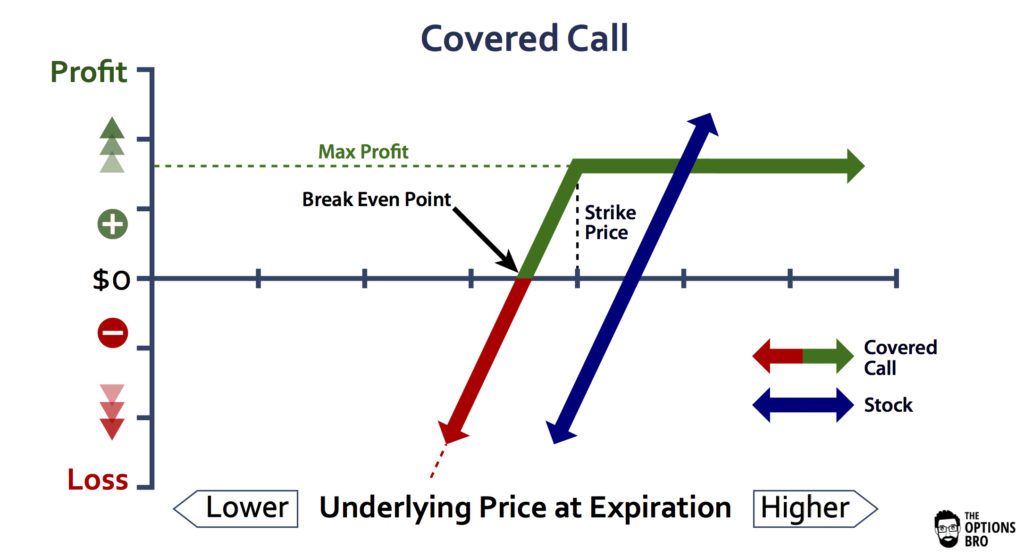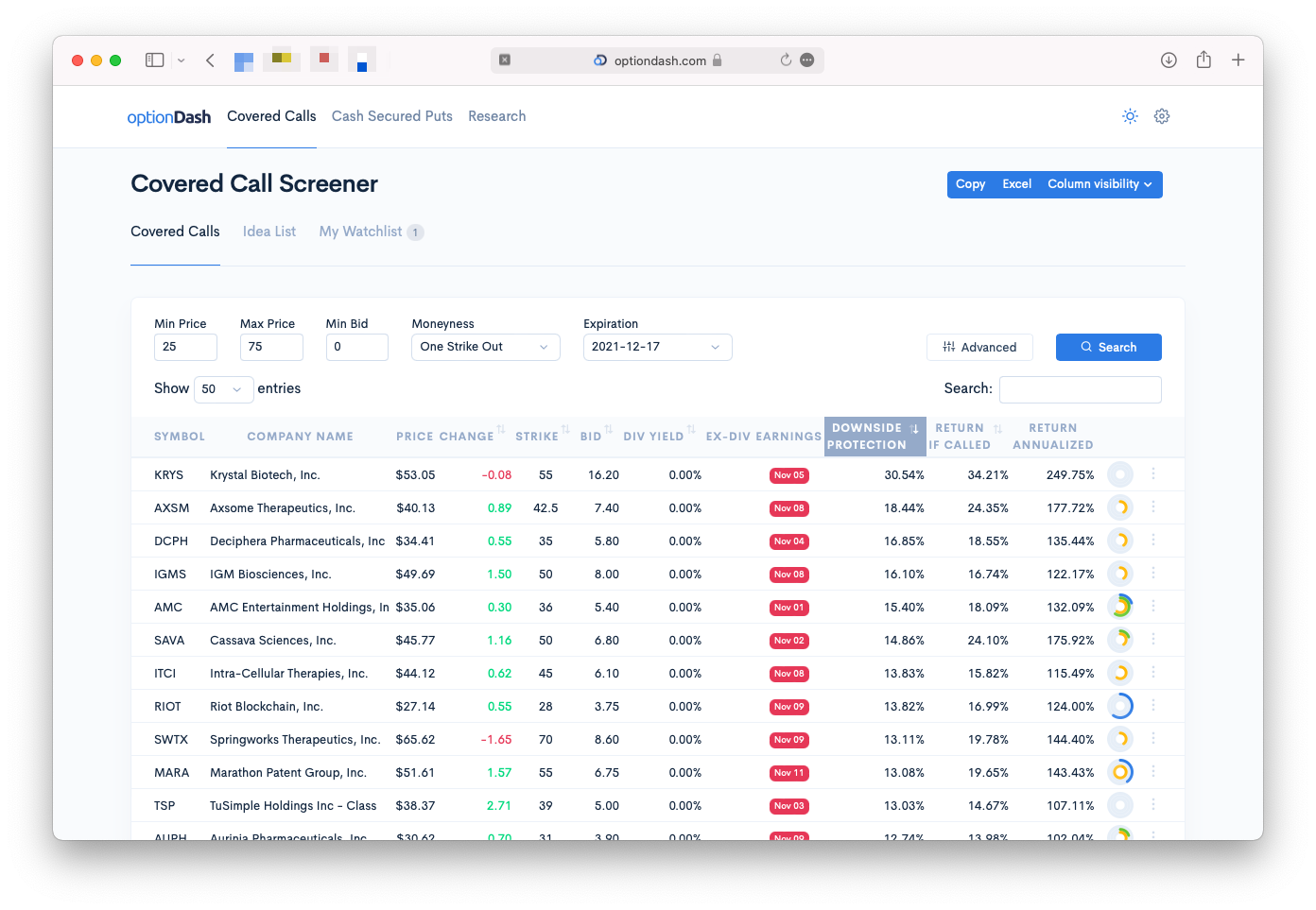Can You Lose Money on Covered Calls?
Jesse Anderson
Covered calls are one of the safest options strategies. After all, the option seller sets the strike price, and the strategy buffers any drop in the underlying stock price. But, of course, covered calls aren’t risk-free, and there are several ways you can lose money. The good news is there are ways to tilt the odds in your favor.
Let’s look at how covered calls work, three ways you can lose money with them, and steps you can take to reduce the risk of loss.
Covered calls are a low-risk way to generate portfolio income, but you can lose money using the strategy. Click To TweetWhat Are Covered Calls?
Covered calls are a popular way to generate income by selling call options against a long stock position. In essence, you’re selling someone the right to buy a stock you own at a fixed price (strike price) before a specific date (expiration date). Since the worst outcome is selling the stock at a price you set, covered calls are one of the lowest-risk options strategies.
Here’s how the covered call option diagram looks:

Covered Call Option Diagram – Source: The Options Bro
As you can see, the covered call limits your upside potential by capping it at your chosen strike price. However, if the stock price drops, covered calls lose less money than a long stock position alone. The best outcome occurs when the stock price is just below the strike price at expiration because you keep the premium income and the stock.
How to Analyze Covered Calls
You can use several metrics to help understand a covered call’s potential risks and rewards and make informed decisions. These metrics can help show you everything from the downside protection a long-term investor might expect when using a covered call to the return potential for a covered call to compare it to other opportunities.
The three most essential metrics include:
- Max Profit – The maximum profit of a covered call occurs when the stock price is at or above the call option’s strike price at expiration. And it’s equal to the sum of the call premium and the difference between the strike price and stock price.
- Break Even Point – The breakeven point occurs when your overall position is even money. And it’s equal to the stock’s purchase price minus the call option premium. Of course, you may also need to add in the impact of commissions on the breakeven point.
- Max Loss – The maximum loss potential for a covered call is how much you stand to lose. And it’s equal to the underlying stock’s decline minus the covered call premium. After all, the premium income provides a buffer against some losses and is received immediately when selling the call.
You may also look at a few additional metrics:
- Downside Protection – The downside protection offered by a covered call is the premium income per share as a percentage of the stock price. For example, a $1.20 premium on a $13.50 stock would provide roughly 9% downside protection.
- Static Return – The annualized static return is the annualized net profit of a covered call, assuming the stock price remains the same. You can calculate it as (Call Premium + Dividend) / Stock Price x (360 / Days to Expiration).
- If-Called Return – The annualized if-called return is the annualized net profit, assuming the stock price is above the strike price. You can calculate it as (Call Premium + Dividend) + (Strike – Stock Price) / Stock Price x (360 / Days to Expiration).
Can You Lose Money on Covered Calls?
There are three ways you can lose money from covered calls knowing these metrics and how they work.
First, covered calls can result in losses if the stock price drops below the breakeven point. While covered calls offer downside protection, you lose money in absolute terms once the price falls below the breakeven point. The good news is that downside protection means you’re losing less money in relative terms (to a long stock-only position).
Second, there’s an opportunity cost if the stock price rises above the effective selling price of the covered call. In other words, you are losing the money you could have made if you only had a long stock position. So while you’re not losing any money in absolute terms, you never earn more than the if-called return of the covered call.
Third, you can lose money if you change the covered call position before expiration. For example, you might roll up or roll out a covered call if the underlying stock price rises above the strike price and you don’t want to sell the stock. But, by doing so, the cost to close the original position may be higher than the premium you collected initially, resulting in a loss.
How to Tilt the Odds in Your Favor
You can avoid losing money on covered calls by taking the time to vet opportunities properly. In addition, you can eliminate or mitigate losses by managing open positions well.
OptionDash provides an excellent screening tool for identifying the best covered call opportunities. In addition to seeing critical metrics at a glance, you can screen for opportunities based on the underlying stock’s fundamentals or the option’s risk/reward profile.

OptionDash provides a helpful screener to find opportunities. Source: OptionDash
Some factors to consider when choosing covered calls include:
- Beta Coefficients – Beta coefficients measure a stock’s historic volatility relative to the S&P 500 index. While low-beta stocks have lower premiums, they’re usually less risky and more predictable.
- Downside Protection – Covered calls with more downside protection (as calculated earlier) provide a greater margin of safety and could help reduce the risk of losses.
- Fundamentals – Companies with low debt-to-equity ratios and high free cash flow yield are usually safe bets because they have no solvency risk and aren’t over-reliant on growth for value.
Position management is equally essential to mitigate risk. If a stock moves sharply higher, you can roll out or up your call options to avoid assignment. And, if a stock moves sharply lower, you may exit the covered call early for a profit and sell the underlying stock or write another covered call to provide extra income.
The Bottom Line
Covered calls are a popular way to generate portfolio income by selling call options against a long stock portfolio. While they’re a low-risk options strategy, there are several ways you can lose money. As a result, you should exercise sufficient due diligence in selecting opportunities and be ready to adjust open positions to mitigate risks over time.
If you trade covered calls, try optionDash’s screener to help find the best opportunities today. And sign up for Snider Advisors’ free e-course to learn actionable strategies to improve your trading.
Posted in Investing |